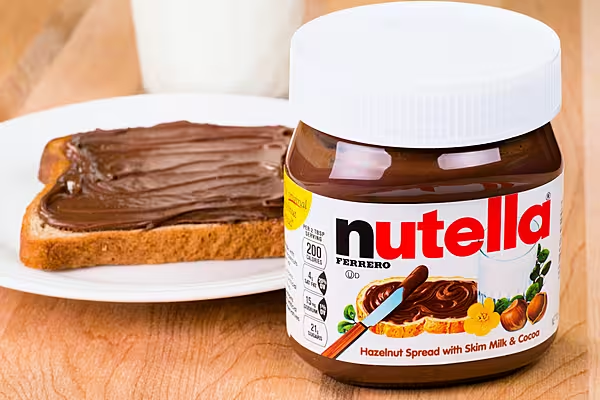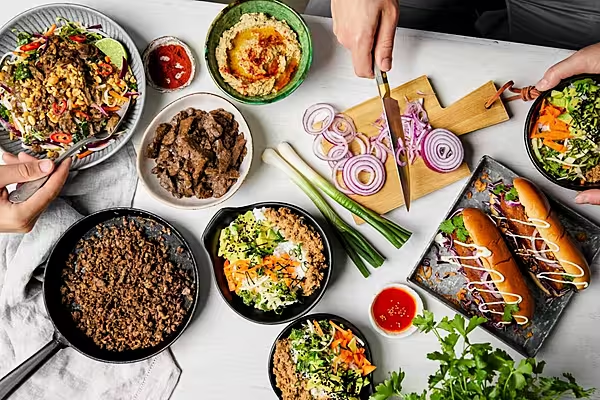Dairy firm Arla has raised its full-year guidance after reporting branded sales volumes at the top end of expectations in the first half of its financial year.
During the period, the group’s total revenue increased 1.2% to €5.44 billion from €5.37 billion in the first half of 2020.
The company attributed this performance to high branded sales volume growth of 5.6% across all dairy categories, particularly in the retail sector.
'A Solid Result'
Arla Foods CEO Peder Tuborgh said, “Global consumer demand for dairy has remained strong over the first half of 2021 as people continue to value the taste, nutritional quality, and variety that dairy brings to their diets.
“Our strong positions across the retail sector and commitment to innovation, together with the resilience of our operations and farmer-owners, has meant that we have delivered a solid result for the first half of 2021 and delivered good returns to our owners through an improved milk price.”
The cooperative’s performance price – which measures the value Arla creates per kilogram of owner milk – amounted to 38.6 cents, up from 37.0 cents in the first half of 2020.
Arla paid a competitive pre-paid milk price, with increases over four consecutive months, leading to a first-half average of 36.0 cents/kilogram, or 1.6 cents higher than last year.
The dairy giant highlighted that many of Arla’s farmer-owners are facing increased production costs following rising global prices of fuel, energy and feed.
On average, feed prices have increased by 13% per cow in the first half of 2021.
Read More: All About Arla – ESM Meets Arla Chief Executive Peder Tuborgh
Outlook
For 2021, Arla expects full-year revenue in the range of €10.6 billion to €11.0 billion, with branded sales volumes growth of 3-4%. It has retained its net profit forecast at 2.8–3.2% of revenue.
Tuborgh added, “The outlook remains volatile, and while our recipe for managing COVID-19 has been successful, we must now manage the transition to the next normal just as well.
“We expect to see a re-balancing of demand between retail and foodservice, which will bring our retail sales to a more familiar level and soften our branded growth, and the broad inflationary environment will continue to challenge our company and farmer-owners.”
Divisional Performance
The Arla brand reported 6.9% growth, with revenue amounting to €1.6 billion, driven by the performance of sub-brands, such as LactoFREE and the ‘fill ‘n fuel’ category.
Arla’s licensed brands saw good results, led by its ready-to-drink Starbucks portfolio, which grew 43% in volume across Europe, the Middle East and Africa.
Growth was seen in all markets, but the UK and Denmark witnessed fast growth, driven in part by significant distribution gains in retail channels and the introduction of new products, such as Starbucks Triple Shot and Starbucks Chilled Classics Grande, Arla added.
The company’s foodservice business was boosted by the re-opening of the hospitality sector in the spring of this year.
Sales did not fully recover due to prolonged global disruptions, but a re-balancing of demand between retail and the HoReCa sector continued to play out, the company noted.
Arla’s e-commerce business grew 33% by revenue compared to the same period last year, with one-third of UK shoppers buying groceries at least once a week.
The company’s digital strategy – focused on building e-commerce, in-house digital marketing capabilities, and innovation in its production facilities - supported its branded sales.
Regional Performance
Arla’s European division delivered solid results with revenue amounting to €3.19 billion compared to €3.17 billion in the same period last year. Branded volumes grew by 2.5% despite a small decline in foodservice in the first quarter of 2021.
The company’s international segment delivered branded growth of 12.2% across all regions and leading brands.
Arla Foods Ingredients (AFI) saw revenue grow to €387 million, compared to €360 million in the first half of 2020.
Arla CFO, Torben Dahl Nyholm, said, “We continue to be in a solid financial position despite the prolonged uncertainty and global operational challenges from COVID-19.
“In the first half of 2021, we have continued to manage our business effectively across our commercial segments. However, the high inflationary pressure will be a challenge in the second half of the year.”














